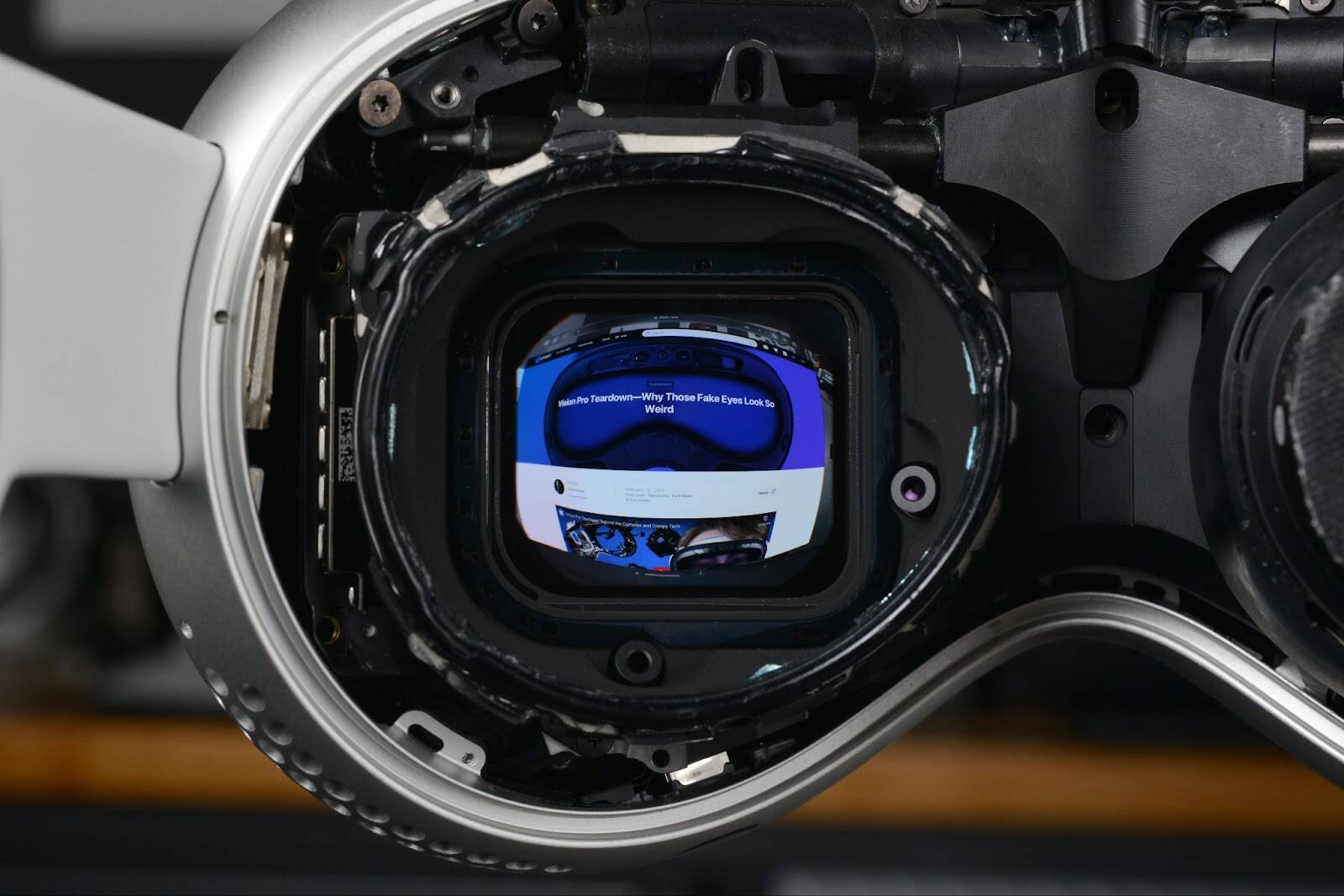Teardown artists iFixit have pried open the Vision Pro and awarded the device a “pretty impressive” provisional repairability score given the device is Apple’s first foray into such gear.
After discovering earlier this week why the Vision Pro’s external eye display looks so weird, the iFixiteers returned with a deeper dive into Apple’s virtual-reality headset. This time, they focused on its display, which the team said has the highest density they’ve seen in any device.
It’s certainly the highest-density display that we’ve ever seen
Apple’s specs for the Vision Pro state the goggles’ screen features about 23 million pixels, and iFixit said that’s about what they’ve found once accounting for the rounded and asymmetrical shape of the device’s screens.
It’s the specifics where things get impressive. According to iFixit, a microscope was needed to measure the individual pixels in the display, which turned out to be just 7.5 micrometers across – about the same size as a human red blood cell.
“With those measurements, the lit area totals 3660 pixels by 3200 pixels. That equates to 12,078,000 pixels smushed into 0.98 square inches,” iFixit’s researcher Charlie Sorrel wrote in the teardown. “For comparison, the iPhone 15 Pro Max has around 460 PPI [pixels per inch], which means you can fit ~54 Vision Pro pixels into a single iPhone pixel.”
“It’s certainly the highest-density display that we’ve ever seen,” he added. Below is video footage of the team’s teardown.
Despite that, the Vision Pro’s angular resolution – measured in pixels per degree, or PPD, the total pixels divided by the degree of the field of view – works out to be surprisingly low, as some reviewers have noted, at just 34 PPD. Again, for comparison, a 65″ 4K TV setting 6.5 feet away from you has around 95 PPD, while the aforementioned iPhone 15 Pro Max held a foot away has around 94 PPD.
“The Vision Pro may have an ultra-high resolution (PPI) display, but because it’s so close to the eye, it has low angular resolution,” Sorrel noted. “So while you will totally be able to use your Mac in your virtual world, you will prefer an actual 4K or 5K monitor for fine work.”
But how repairable is it?
With a few extra days to take the device apart, iFixit concluded “there’s a lot to like” about Apple’s first foray into head-mounted display hardware. The team noted the modularity of parts like the easily removable bands, magnetically attached prescription lenses, the light shield, and its external battery pack. Yes – it has a separate battery of non-replaceable cells connected to the headset by a power cord.
The iFixit bods also noted some durability issues.
The device’s sensors and front-facing cameras are housed behind the headset’s glass cover, which iFixit found nearly impossible to remove without damaging it. Additionally, the glass screen is easy to break, and with the sensors all located behind it, a broken front piece means users won’t be able to properly perceive the world around them, leaving a damaged unit unable to function correctly.
The Vision Pro, for the uninitiated, is a fully immersive VR headset that runs apps and suchlike, and uses cameras to give wearers a view of the outside world as needed. The Meta Quest 2 and Quest 3, made of plastic and without a fragile glass screen, are far more durable, iFixit noted. Zuck’s headwear also doesn’t have sensor-blocking issues.
iFixit awarded the Apple Vision Pro a provisional four out of ten score for repairability, which is a bit crap but for Apple isn’t bad – which speaks volumes, frankly. Cupertino is only just coming around to the concept of right-to-repair. Five out of ten is considered the tipping point where you can potentially fix something yourself without needing an expert. A four is said to be doable for a typical user, though they may struggle or find it tough.
“The bar is really that low, folks,” wrote Sorrel. “Do we wish that the battery pack had replaceable cells? Of course. Is this pretty impressive for Apple’s first foray? Also yes.”
Coincidentally four out of ten was the same score iFixit gave the Meta Quest 3 in October 2023, albeit for different reasons. The Vision Pro score is provisional because testing is still incomplete on a number of components of the device.
Low score aside, Sorrel reckoned it’s clear Apple intended to make at least some components in the device replaceable – which is “pretty major” – while also admitting that vendors of head-mounted displays (HMDs) are yet to make repairability a priority. “There are still HMDs without replaceable pads,” he wrote.
“We are pleasantly surprised,” iFixit repairability engineer Carsten Frauenheim told The Register.
You can fit ~54 Vision Pro pixels into a single iPhone pixel
Ultimately, the iFixit team found several things to be pleased about with the Vision Pro, but noted the future of extended reality hardware “may not be here yet.”
“Our hope is that, by the time these things get shrunken into a pair of eyeglasses, repairability won’t be something tacked on at the end, but a fundamental design tenet,” Sorrel argued. “If face goggles really are the future of computing, then we need to get this right from the very beginning.” ®

Maria Malik is your guide to the immersive world of Virtual Reality (VR). With a passion for VR technology, she explores the latest VR headsets, applications, and experiences, providing readers with in-depth reviews, industry insights, and a glimpse into the future of virtual experiences.


